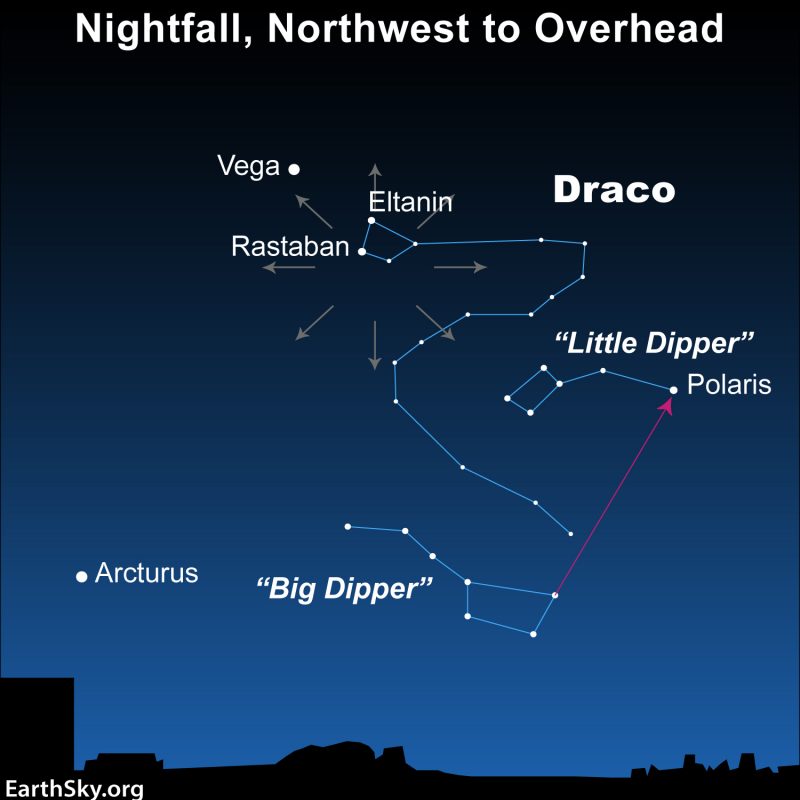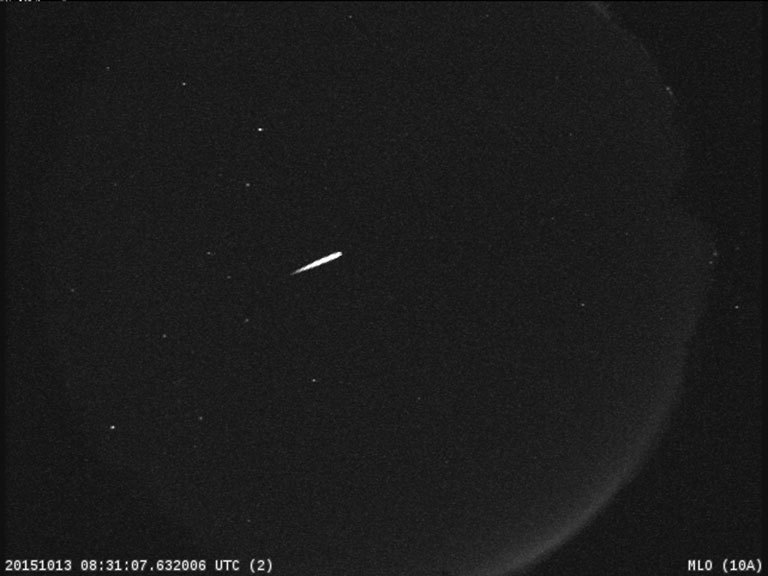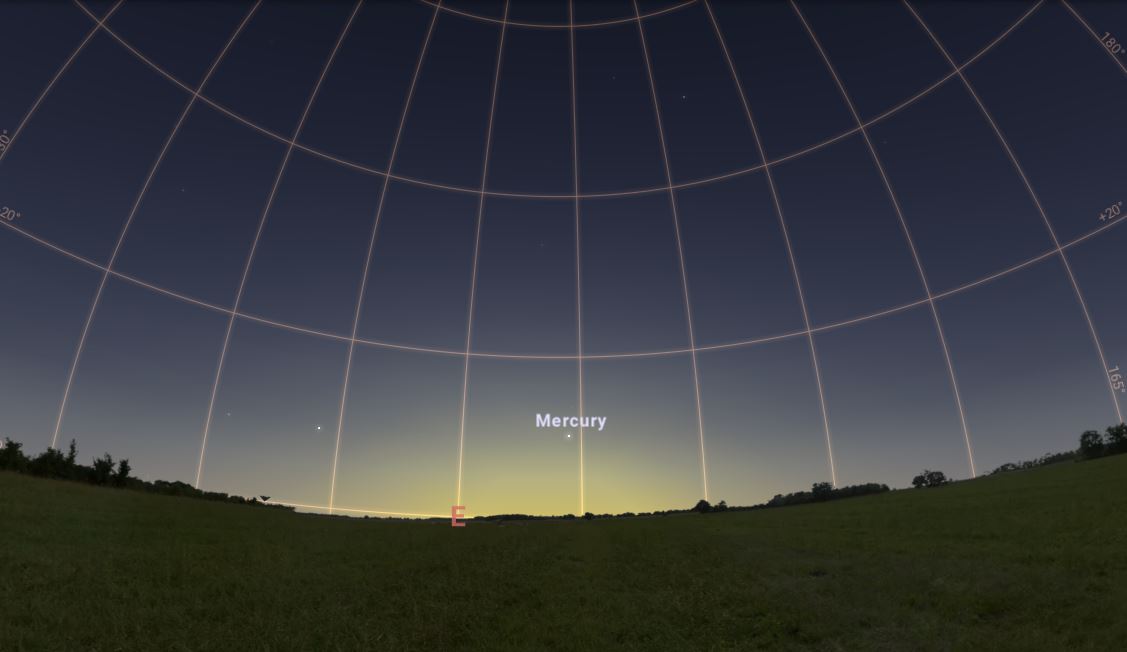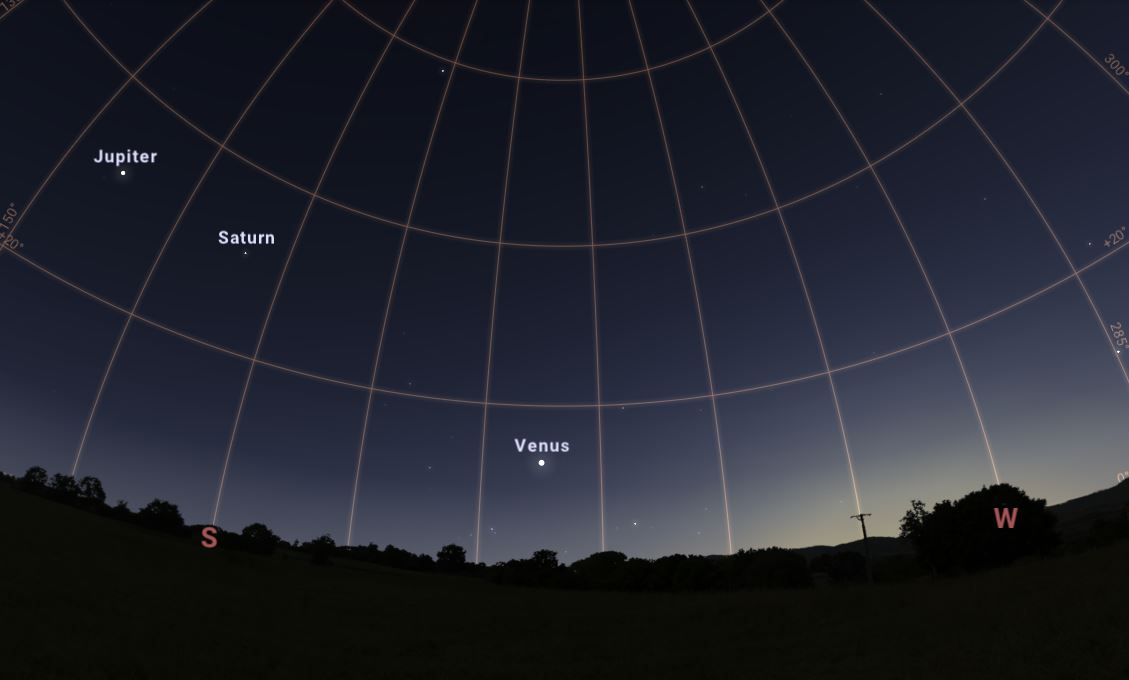What to Look For in the Night Sky: October
Special Stories
1 Oct 2021 1:00 PM
Cooler nights are upon us! If you live in a more northern latitude that may mean bundling up to do any star gazing, while those in the Deep South finally get some more comfortable overnights, albeit with some lingering bug activity.
Regardless of your latitude, there are some great sky watching opportunities during the month of October, including two meteor showers! Read on for the highlights.
Spotting the International Space Station is always a great activity and is easy to do thanks to this handy tool. For detailed explanations and even more events, check out the “tonight” feature at EarthSky.
 Image Courtesy: EarthSky.org
The Draconids are a short-lived meteor shower that are a bit unusual. Instead of producing the greatest number of visible meteors in the pre-dawn hours (like most showers), the Draconids often put on the best show in the evening. Watching in the evening hours on the 7th, 8th, or 9th should yield a handful of meteors per hour under ideal conditions (away from city lights).
Even though this shower doesn't typically produce a lot compared to other showers, it will occasionally produce hundreds to thousands of meteors per hour when earth goes through a dense section of Draconid space dust.
For best viewing conditions, try to watch as much of the sky as possible after dark, away from light sources. Meteors will appear to originate from Draco, just above the Big and Little Dipper.
Image Courtesy: EarthSky.org
The Draconids are a short-lived meteor shower that are a bit unusual. Instead of producing the greatest number of visible meteors in the pre-dawn hours (like most showers), the Draconids often put on the best show in the evening. Watching in the evening hours on the 7th, 8th, or 9th should yield a handful of meteors per hour under ideal conditions (away from city lights).
Even though this shower doesn't typically produce a lot compared to other showers, it will occasionally produce hundreds to thousands of meteors per hour when earth goes through a dense section of Draconid space dust.
For best viewing conditions, try to watch as much of the sky as possible after dark, away from light sources. Meteors will appear to originate from Draco, just above the Big and Little Dipper.
 No offense to the Draconids, but this is the better October meteor shower (usually). The only problem with this year's Orionids is the peak comes the day after the full moon. Full moon equals brightness, brightness equals fewer meteors for you and me.
This shower occurs annually when the Earth passes through the trail of debris left by Halley's Comet, which typically spawns 10-20 meteors an hour under ideal conditions. The near full moon will mean all but the brightest of these meteors are washed out. The peak of the Orionids is broad so, you can try watching the week before or after the peak to see a few more burning bits of dust without the moon washing things out.
As with all meteor showers, your best plan to see or photograph them is to get away from city lights and watch for at least an hour, trying to take in as much of the sky as possible.
No offense to the Draconids, but this is the better October meteor shower (usually). The only problem with this year's Orionids is the peak comes the day after the full moon. Full moon equals brightness, brightness equals fewer meteors for you and me.
This shower occurs annually when the Earth passes through the trail of debris left by Halley's Comet, which typically spawns 10-20 meteors an hour under ideal conditions. The near full moon will mean all but the brightest of these meteors are washed out. The peak of the Orionids is broad so, you can try watching the week before or after the peak to see a few more burning bits of dust without the moon washing things out.
As with all meteor showers, your best plan to see or photograph them is to get away from city lights and watch for at least an hour, trying to take in as much of the sky as possible.
 Image created with Stellarium
Mercury is small and close to the Sun. Those aren't good characteristics if you're trying to look at the thing from Earth.
Occasionally things will line up nicely to see Mercury and the end of October happens to be one of those times. This is when Mercury will be reaching its greatest Western Elongation, meaning it will be at a favorable angle relative to the Sun and Earth, to be seen in the morning sky. Get outside before sunrise around the 25th of October to spot the small, sizzling rocky planet low on the eastern horizon.
Image created with Stellarium
Mercury is small and close to the Sun. Those aren't good characteristics if you're trying to look at the thing from Earth.
Occasionally things will line up nicely to see Mercury and the end of October happens to be one of those times. This is when Mercury will be reaching its greatest Western Elongation, meaning it will be at a favorable angle relative to the Sun and Earth, to be seen in the morning sky. Get outside before sunrise around the 25th of October to spot the small, sizzling rocky planet low on the eastern horizon.
 Image created with Stellarium
Venus is a much easier planet to spot than Mercury thanks to its larger size and relative distance from the Sun and Earth. It will be very easy to see toward the end of October as it reaches its greatest eastern elongation.
To view this sassy and gassy planet, look toward the southwest as the sun goes down in the evenings toward the end of October. The big bright dot that shows up before anything else will be Venus.
Happy sky watching!
Image created with Stellarium
Venus is a much easier planet to spot than Mercury thanks to its larger size and relative distance from the Sun and Earth. It will be very easy to see toward the end of October as it reaches its greatest eastern elongation.
To view this sassy and gassy planet, look toward the southwest as the sun goes down in the evenings toward the end of October. The big bright dot that shows up before anything else will be Venus.
Happy sky watching!
October 6th: New Moon
The moon reaches its new phase early in the month, leaving ideal conditions to view stars, planets, and other objects with greater detail. Since these objects won't be washed out by the moon's light, you can try to spot Saturn's rings with a telescope or perhaps try to find a galaxy or two. You could also see a few meteors since two showers peak during this month, including the Draconids on the very next night!October 7th: Draconids Meteor Shower
 Image Courtesy: EarthSky.org
The Draconids are a short-lived meteor shower that are a bit unusual. Instead of producing the greatest number of visible meteors in the pre-dawn hours (like most showers), the Draconids often put on the best show in the evening. Watching in the evening hours on the 7th, 8th, or 9th should yield a handful of meteors per hour under ideal conditions (away from city lights).
Even though this shower doesn't typically produce a lot compared to other showers, it will occasionally produce hundreds to thousands of meteors per hour when earth goes through a dense section of Draconid space dust.
For best viewing conditions, try to watch as much of the sky as possible after dark, away from light sources. Meteors will appear to originate from Draco, just above the Big and Little Dipper.
Image Courtesy: EarthSky.org
The Draconids are a short-lived meteor shower that are a bit unusual. Instead of producing the greatest number of visible meteors in the pre-dawn hours (like most showers), the Draconids often put on the best show in the evening. Watching in the evening hours on the 7th, 8th, or 9th should yield a handful of meteors per hour under ideal conditions (away from city lights).
Even though this shower doesn't typically produce a lot compared to other showers, it will occasionally produce hundreds to thousands of meteors per hour when earth goes through a dense section of Draconid space dust.
For best viewing conditions, try to watch as much of the sky as possible after dark, away from light sources. Meteors will appear to originate from Draco, just above the Big and Little Dipper.
October 20th: Full "Hunter's" Moon
The next full moon after the Harvest Moon (closest full moon to the Atumnal Equinox) is often referred to as the Hunter's Moon! This won't be a "super" moon or anything special really, aside from the fact the every full moon is special , according to the moon's mother. Other names for the October full moon are: Drying Rice Moon, Fall Leaves Moon, Freezing Moon (or Ice Moon), and the Migrating Moon.October 21-22: Orionids Meteor Shower
 No offense to the Draconids, but this is the better October meteor shower (usually). The only problem with this year's Orionids is the peak comes the day after the full moon. Full moon equals brightness, brightness equals fewer meteors for you and me.
This shower occurs annually when the Earth passes through the trail of debris left by Halley's Comet, which typically spawns 10-20 meteors an hour under ideal conditions. The near full moon will mean all but the brightest of these meteors are washed out. The peak of the Orionids is broad so, you can try watching the week before or after the peak to see a few more burning bits of dust without the moon washing things out.
As with all meteor showers, your best plan to see or photograph them is to get away from city lights and watch for at least an hour, trying to take in as much of the sky as possible.
No offense to the Draconids, but this is the better October meteor shower (usually). The only problem with this year's Orionids is the peak comes the day after the full moon. Full moon equals brightness, brightness equals fewer meteors for you and me.
This shower occurs annually when the Earth passes through the trail of debris left by Halley's Comet, which typically spawns 10-20 meteors an hour under ideal conditions. The near full moon will mean all but the brightest of these meteors are washed out. The peak of the Orionids is broad so, you can try watching the week before or after the peak to see a few more burning bits of dust without the moon washing things out.
As with all meteor showers, your best plan to see or photograph them is to get away from city lights and watch for at least an hour, trying to take in as much of the sky as possible.
October 25th: Mercury Shines Bright in the Eastern Sky
 Image created with Stellarium
Mercury is small and close to the Sun. Those aren't good characteristics if you're trying to look at the thing from Earth.
Occasionally things will line up nicely to see Mercury and the end of October happens to be one of those times. This is when Mercury will be reaching its greatest Western Elongation, meaning it will be at a favorable angle relative to the Sun and Earth, to be seen in the morning sky. Get outside before sunrise around the 25th of October to spot the small, sizzling rocky planet low on the eastern horizon.
Image created with Stellarium
Mercury is small and close to the Sun. Those aren't good characteristics if you're trying to look at the thing from Earth.
Occasionally things will line up nicely to see Mercury and the end of October happens to be one of those times. This is when Mercury will be reaching its greatest Western Elongation, meaning it will be at a favorable angle relative to the Sun and Earth, to be seen in the morning sky. Get outside before sunrise around the 25th of October to spot the small, sizzling rocky planet low on the eastern horizon.
October 29th: Venus Dazzles in the Eastern Sky
 Image created with Stellarium
Venus is a much easier planet to spot than Mercury thanks to its larger size and relative distance from the Sun and Earth. It will be very easy to see toward the end of October as it reaches its greatest eastern elongation.
To view this sassy and gassy planet, look toward the southwest as the sun goes down in the evenings toward the end of October. The big bright dot that shows up before anything else will be Venus.
Happy sky watching!
Image created with Stellarium
Venus is a much easier planet to spot than Mercury thanks to its larger size and relative distance from the Sun and Earth. It will be very easy to see toward the end of October as it reaches its greatest eastern elongation.
To view this sassy and gassy planet, look toward the southwest as the sun goes down in the evenings toward the end of October. The big bright dot that shows up before anything else will be Venus.
Happy sky watching!All Weather News
More